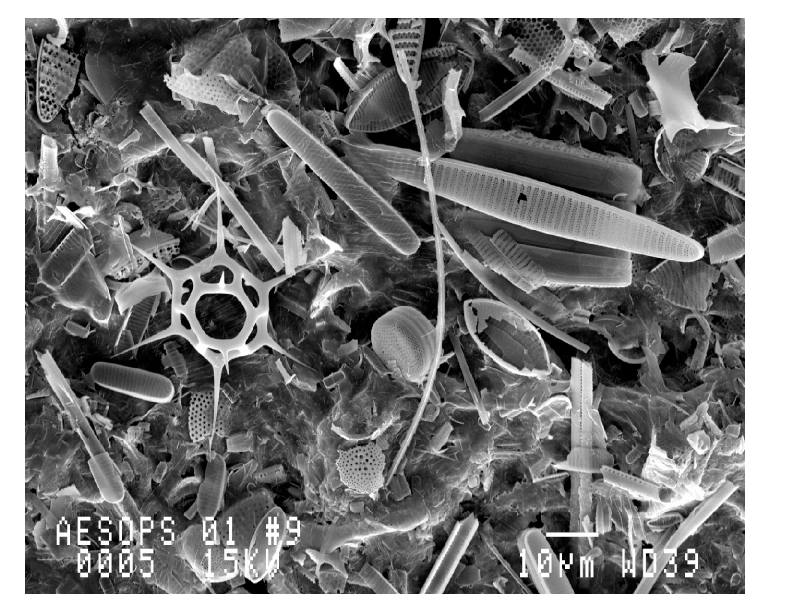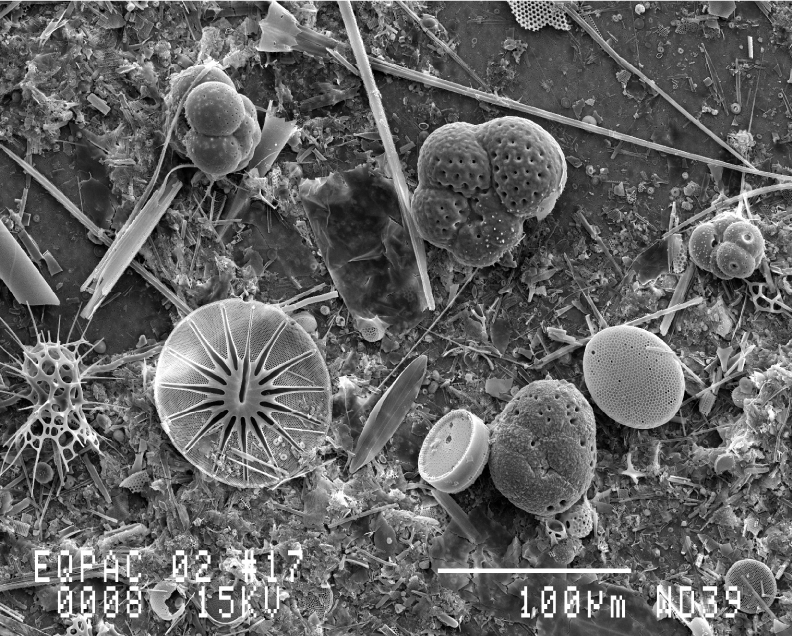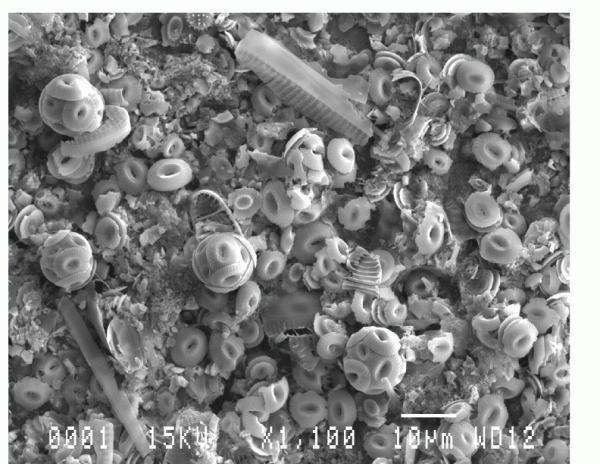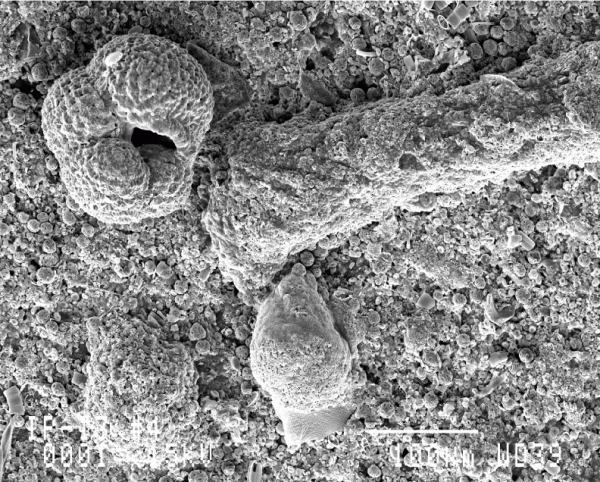As a professional fossil watcher, it is a particular delight to explore deep sea mud–the stuff is literally made out of fossils! Of course, they are rather small (a few microns to a few millimeters), but there is lots of life’s diversity there. Some deep sea sediments are composed mainly of siliceous fossils–made of opal–such as diatoms and radiolarians. Others are made of carbonate such as the foraminifera and coccolithiphorids. Still others are made of organic material such as spores and pollen grains blown in from plants on land, or the skeletons of dinoflagellates–a group of algal protists. Together, these fossiliferous sediments (also known as biogenic sediments) have the delightful name ‘ooze’ when they are still muddy and unlithified. Harder sediments are called chalk, limestone, porcellanite or chert, depending upon how rock-like they have become and whether they are made of calcareous or siliceous fossils.
In the deep ocean near the poles, much of the mud on the sea floor is composed of the skeletons of microscopic single-celled algae and animal protists–the diatoms, silicoflagellates and radiolarians. Diatoms are photosynthetic algae and are particularly abundant in the “opal ocean’ of the North Pacific and Southern Ocean. In both places, nutrient-rich waters well up to the surface and fuel massive blooms of opal-producing organisms during the polar spring and summer. Most of this opal dissolves again as the shells sink toward the ocean floor, but enough survives to accumulate in deep sea sediments.
The photo above shows a silicoflagellate (the star-like fossil) and a variety of diatoms (the button-like or elongate shells) from the Southern Ocean. The sample comes from a “sediment trap”–a big funnel hung in the deep ocean to collect the skeletal remains as they rain toward the sea floor.
In the tropical oceans, the ‘ooze’ is composed mainly of calcareous fossils, like the foraminifera–a group of single celled animal protists– and the coccolithophorids–calcareous algae. The photo below shows another sediment trap image, this one from the tropical Pacific.
Here, the globular things are planktic foraminifera, the disk-like fossil with an intricate pattern of holes in the middle is a diatom, and the spun-glass spiny thing on the far left is a radiolarian. Radiolarians always remind me of the spun-glass at the State Fair! The radiolarians and foraminifera are both pelagic predators–attacking other protists but also eating larger prey like copepods and even larval fish. Lacking jaws, these micropredators rip apart their prey with their pseudopods–what a way to go! Coccolithophorids are too small to see in this image, but they are abundant in the original sample and compose some of the gunge on the larger fossils.
The image below shows biogenic ooze accumulating off of the coast of Iceland, in the North Atlantic. There the sediment is composed almost entirely of coccolithophorid algae. At high magnification, these algae can be seen to have very complex ‘coccoliths’ as skeletons. The coccoliths overlap and interlock, creating a thick calcite shield against the world. What are the coccolithophoids doing with their skeletons? Are they protection against viruses, bacteria, predators like copepods? Or are their skeletons a means for regulating their buoyancy, directing light on their chloroplasts, or something else?
The lower magnification image below shows a foraminifer and a mass of coccoliths, some of which are embedded in an elongate fecal pellet–perhaps remains of coccolithophorids eaten by a copepod.




